Содержание
- 2. Chapter Learning Objectives After studying this chapter, you should be able to: Describe the three elements
- 3. Defining Motivation The result of the interaction between the individual and the situation. The processes that
- 4. Early Theories of Motivation These early theories may not be valid, but they do form the
- 5. Maslow’s Hierarchy of Needs There is a hierarchy of five needs. As each need is substantially
- 6. McGregor’s Theory X and Theory Y Two distinct views of human beings: Theory X (basically negative)
- 7. Herzberg’s Two-Factor Theory Copyright © 2011 Pearson Education, Inc. publishing as Prentice Hall 7- See E
- 8. Criticisms of Two-Factor Theory Herzberg says that hygiene factors must be met to remove dissatisfaction. If
- 9. McClelland’s Three Needs Theory Need for Achievement (nAch) The drive to excel, to achieve in relation
- 10. Performance Predictions for High nAch People with a high need for achievement are likely to: Prefer
- 11. Self-Determination Theory Goal-Setting Theory Management by Objectives (MBO) Self-Efficacy Theory Also known as Social Cognitive Theory
- 12. Locke’s Goal-Setting Theory Basic Premise: That specific and difficult goals, with self-generated feedback, lead to higher
- 13. MBO is a systematic way to utilize goal-setting. Goals must be: Tangible Verifiable Measurable Corporate goals
- 14. Adams’ Equity Theory Employees compare their ratios of outcomes-to-inputs of relevant others. When ratios are equal:
- 15. Can be four different situations: Self-Inside The person’s experience in a different job in the same
- 16. Reactions to Inequity Employee behaviors to create equity: Change inputs (slack off) Change outcomes (increase output)
- 17. Justice and Equity Theory Copyright © 2011 Pearson Education, Inc. publishing as Prentice Hall 7- See
- 18. Vroom’s Expectancy Theory The strength of a tendency to act in a certain way depends on
- 19. Integrating Contemporary Motivation Theories Based on Expectancy Theory Copyright © 2011 Pearson Education, Inc. publishing as
- 20. Global Implications Motivation theories are often culture-bound. Maslow’s Hierarchy of Needs Theory Order of needs is
- 21. Summary and Managerial Implications Need Theories (Maslow, Alderfer, McClelland, Herzberg) Well known, but not very good
- 23. Скачать презентацию



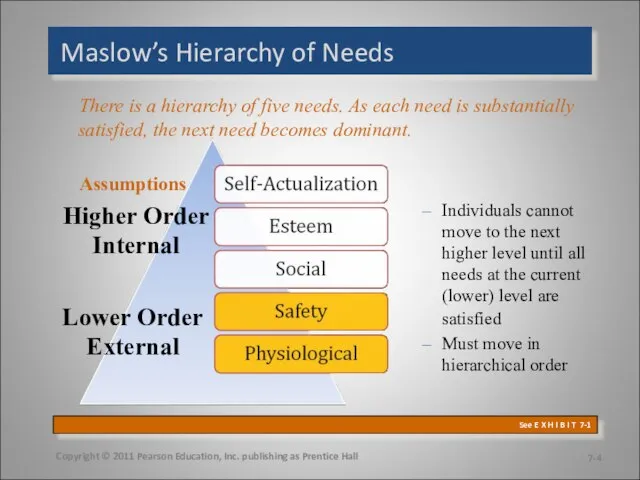
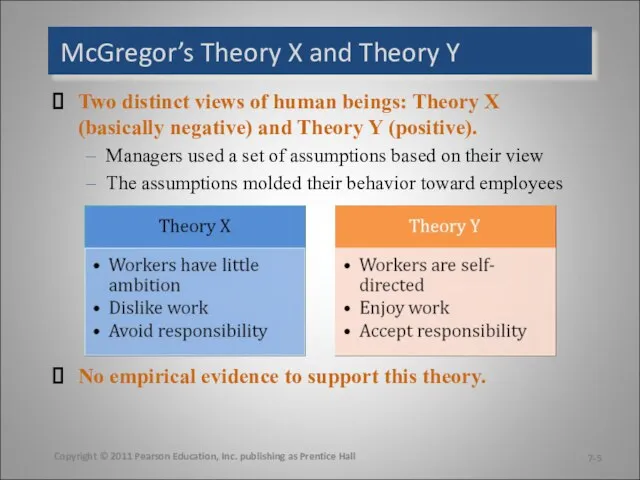
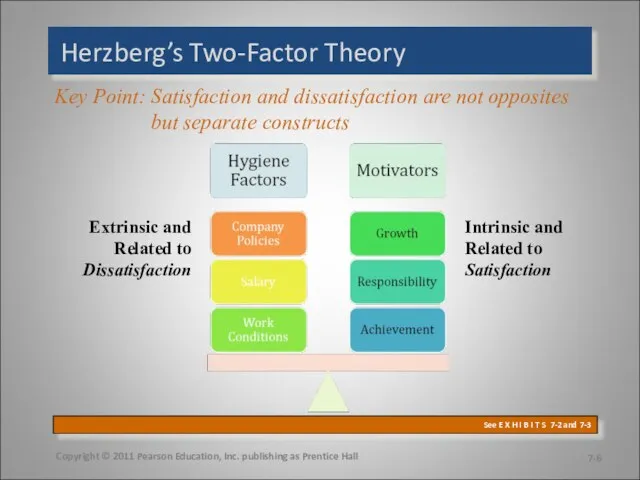
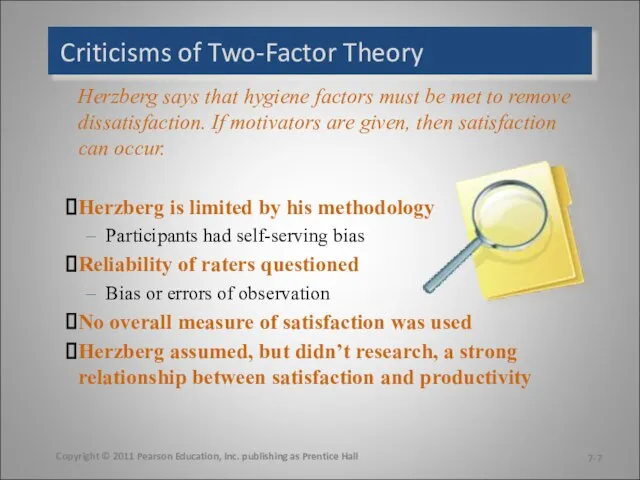
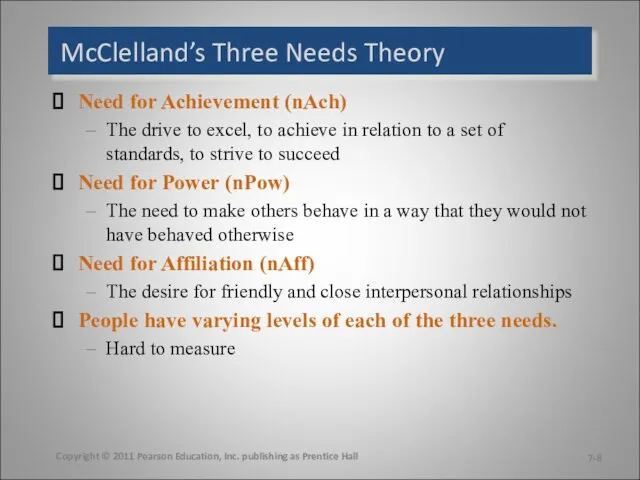
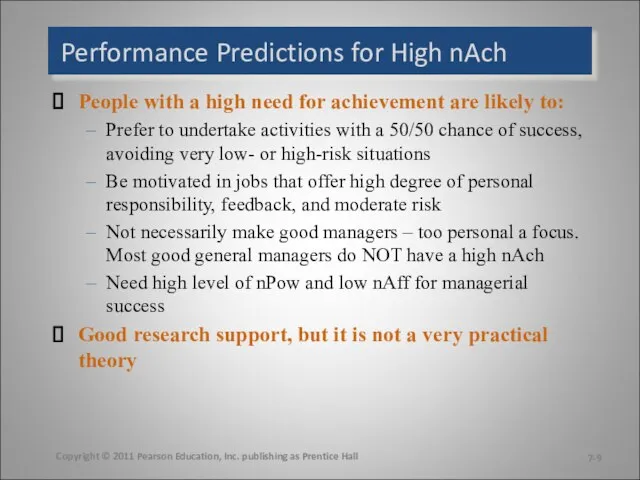
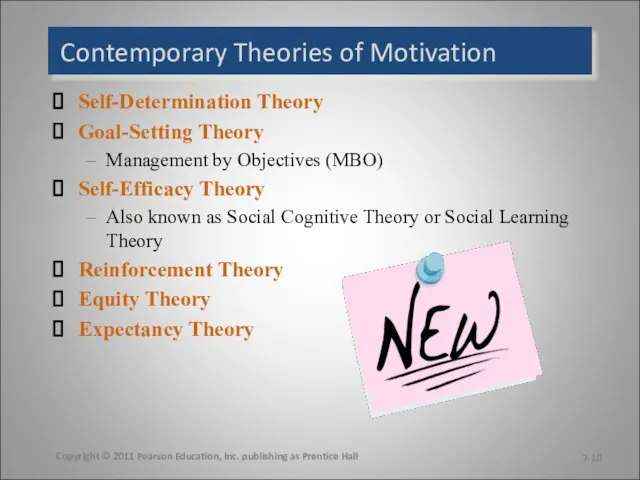
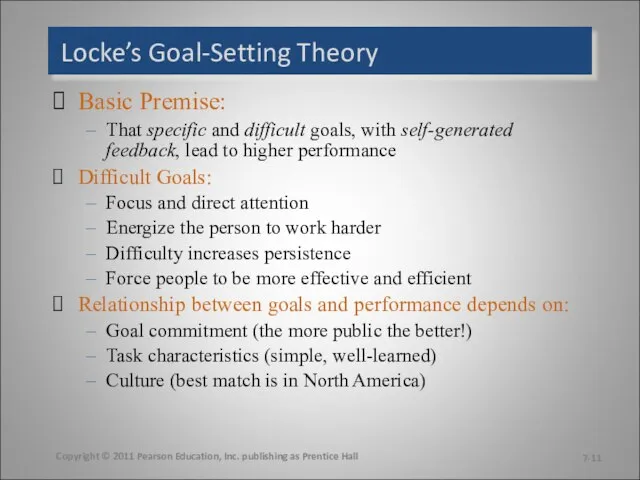
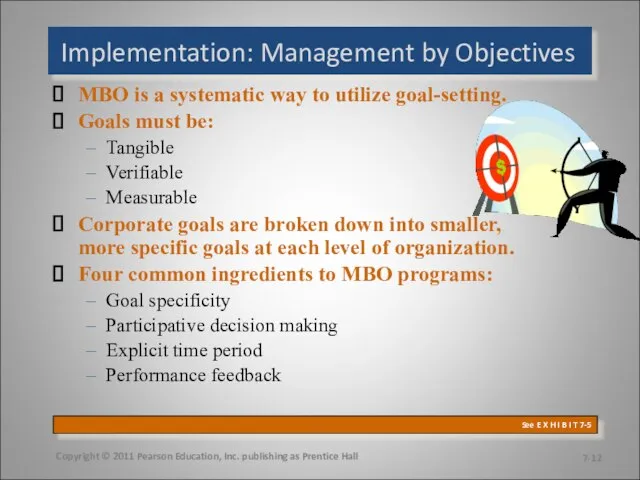
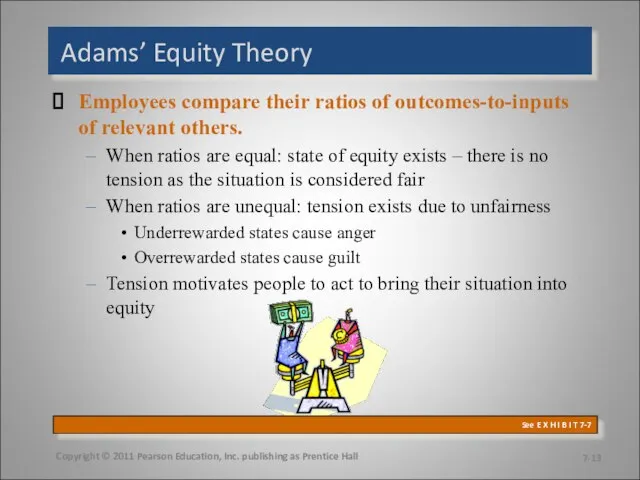
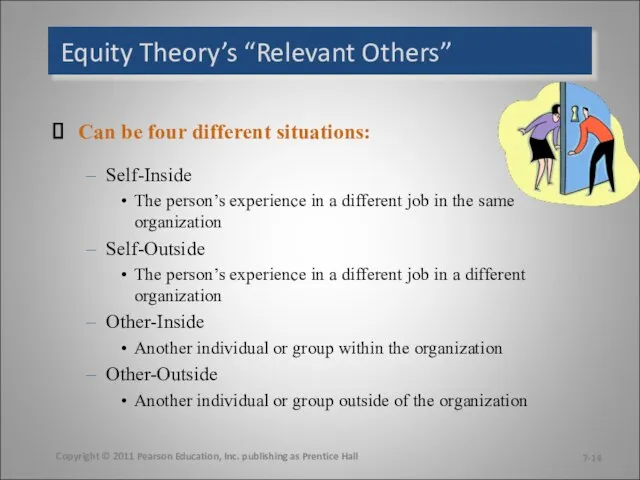
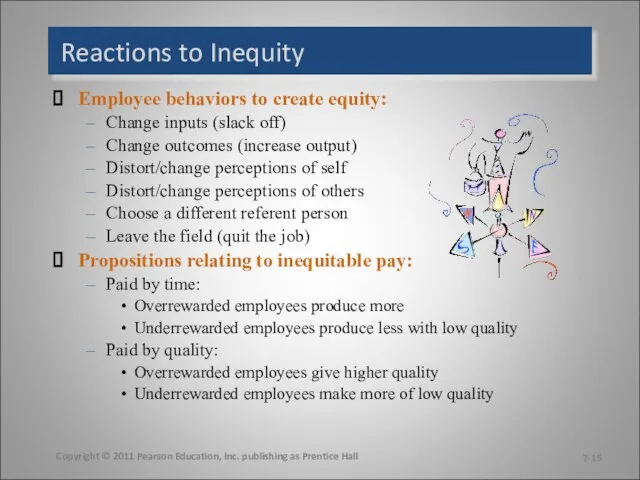
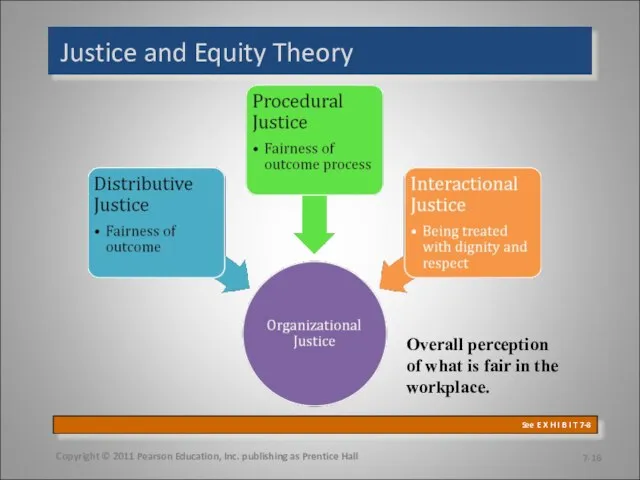
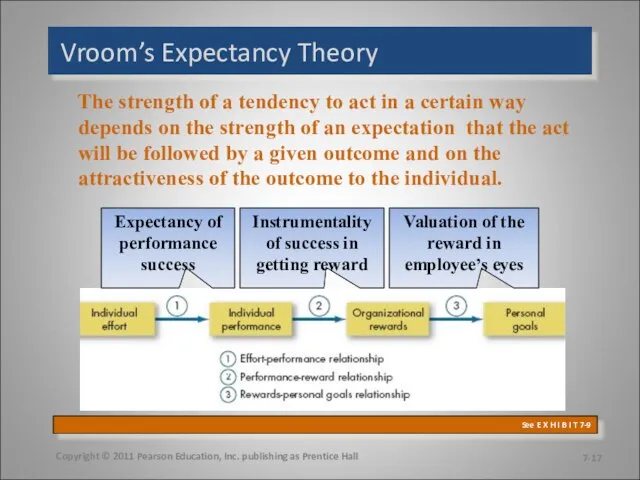
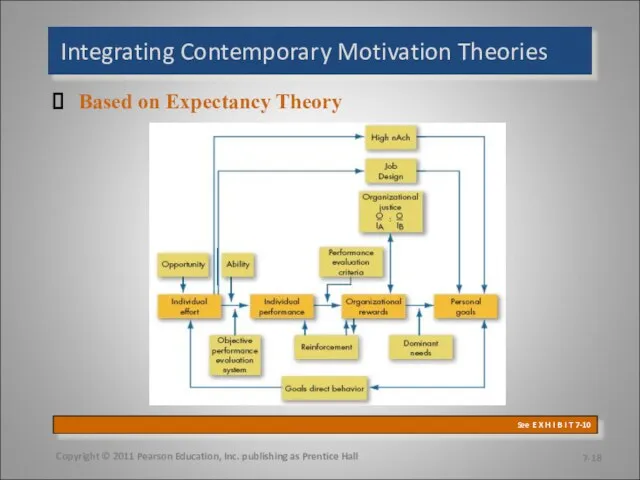
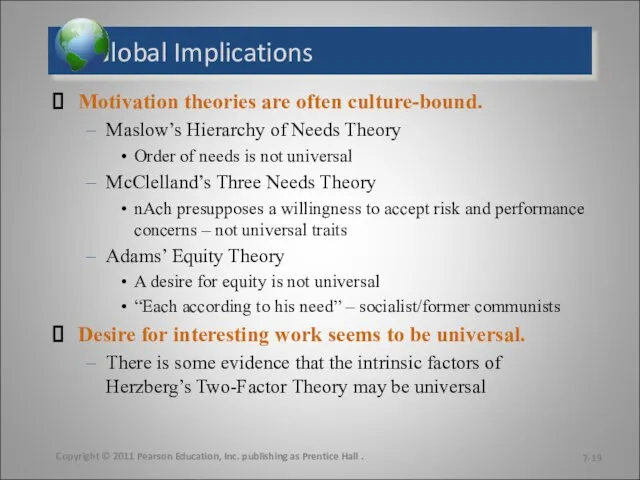
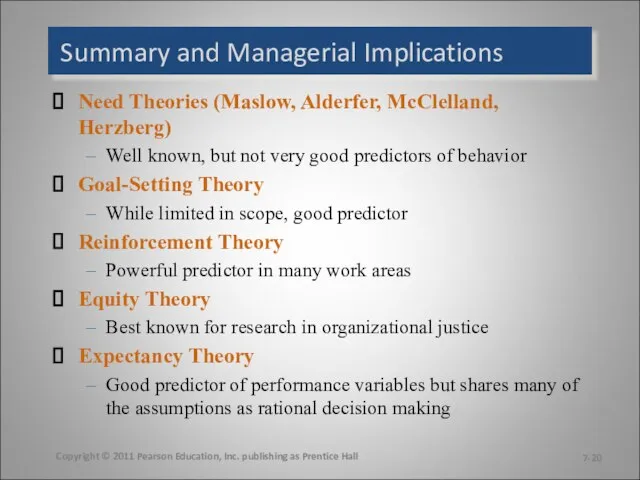
 Система команд процессора
Система команд процессора Проблемное обучение
Проблемное обучение Архитектура электронного округа
Архитектура электронного округа Учимся улыбаться
Учимся улыбаться Презентация на тему История создания романа «Война и мир»
Презентация на тему История создания романа «Война и мир» L’alimentation saine et régulière
L’alimentation saine et régulière РОССИЙСКАЯ МОДЕЛЬ СОЦИАЛЬНЫХ ОТНОШЕНИЙ и социальная политика
РОССИЙСКАЯ МОДЕЛЬ СОЦИАЛЬНЫХ ОТНОШЕНИЙ и социальная политика Итоговая аттестация выпускников 9-х классов
Итоговая аттестация выпускников 9-х классов Разработка программы восстановления цветности полутоновых изображений
Разработка программы восстановления цветности полутоновых изображений  Мутация- источник формирования биологического разнообразия
Мутация- источник формирования биологического разнообразия The Widow's Mite
The Widow's Mite The development of management theory
The development of management theory Идеи новогоднего макияжа
Идеи новогоднего макияжа Presentation Title
Presentation Title  2_5287247905520885514
2_5287247905520885514 Мотивация трудовой деятельности
Мотивация трудовой деятельности Невербальные средства общения: мимика, взгляд, жесты, поза
Невербальные средства общения: мимика, взгляд, жесты, поза Sir Joshua Reynolds (1723 -1792)
Sir Joshua Reynolds (1723 -1792) Использование нестандартного оборудования
Использование нестандартного оборудования ЮниорПрофи
ЮниорПрофи Developing Advocacy StrategyРазработка агитационной стратегии
Developing Advocacy StrategyРазработка агитационной стратегии Африканская улитка ахатина
Африканская улитка ахатина Игровые технологии на уроке литературы.
Игровые технологии на уроке литературы. Создание презентации
Создание презентации Порядок подготовки офицеров для прохождения службы по контракту на военных кафедрах образовательных учреждений
Порядок подготовки офицеров для прохождения службы по контракту на военных кафедрах образовательных учреждений Друзья – монстры
Друзья – монстры Духовная культура. Тест
Духовная культура. Тест Изменение имен существительных
Изменение имен существительных